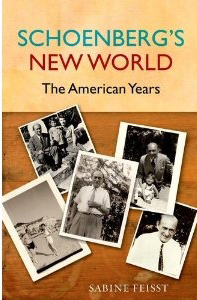 She applied the “Page 99 Test” to her new book, Schoenberg's New World: The American Years, and reported the following:
She applied the “Page 99 Test” to her new book, Schoenberg's New World: The American Years, and reported the following:Schoenberg’s New World is the first full-length study dedicated to the American years (1933–51) of Arnold Schoenberg, the Viennese-born polarizing pioneer of musical modernism. On page 99 of this book I address Schoenberg’s Jewish identity with which he came to terms privately and professionally while grappling with his German roots and forming a new American identity. Page 99 specifically examines the possibility of Jewish thought inherent in Schoenberg’s approach to music composition. Even though Schoenberg himself never discussed this issue in depth, such scholars as Steven Beller, Leon Botstein, Steven Schwarzschild and André Neher came up with an intriguing array of interpretations. In Beller’s and Botstein’s view, Schoenberg’s modernist musical critique of beauty- and style-obsessed Viennese culture was an ethical stance indebted to the expression of truth and the musical idea, and directly points to the Jewish tradition of ethical stoicism. Schoenberg believed that music should avoid ornaments and other decorative elements and instead focus on earnest and essential expressivity. Further Beller sees in Schoenberg’s use of one musical idea and one twelve-tone row underpinning an entire composition a reflection of the idea of “ethical monotheism,” a secular expression of Jewishness. Schwarzschild compared the idea of a twelve-tone row and its transformations to “variations of the alphabetic acrostic in the Biblical book of Lamentations and indeed, the kabbalistic uses of this practice.” Neher associated Schoenberg’s twelve-tone rows to the number of tribes of Israel or the sons of Jacob. Page 99 is a small puzzle piece within a chapter on Schoenberg’s socialization in America and negotiation of three identities. The discussion of Schoenberg’s Jewish identity from pages 81–112 is preceded by an examination of his German heritage and followed by an in-depth exploration of his socialization in America, his friendship with Americans, and his contributions to American music.Learn more about Schoenberg’s New World at the Oxford University Press website, and visit Sabine Feisst's website.
The book also traces Schoenberg’s earliest champions in America, his American works and his music’s performance and publication in the United States. Further the volume elucidates his teaching activities and impact on American music after 1945. Schoenberg’s New World contributes to a new understanding of Schoenberg.
--Marshal Zeringue



